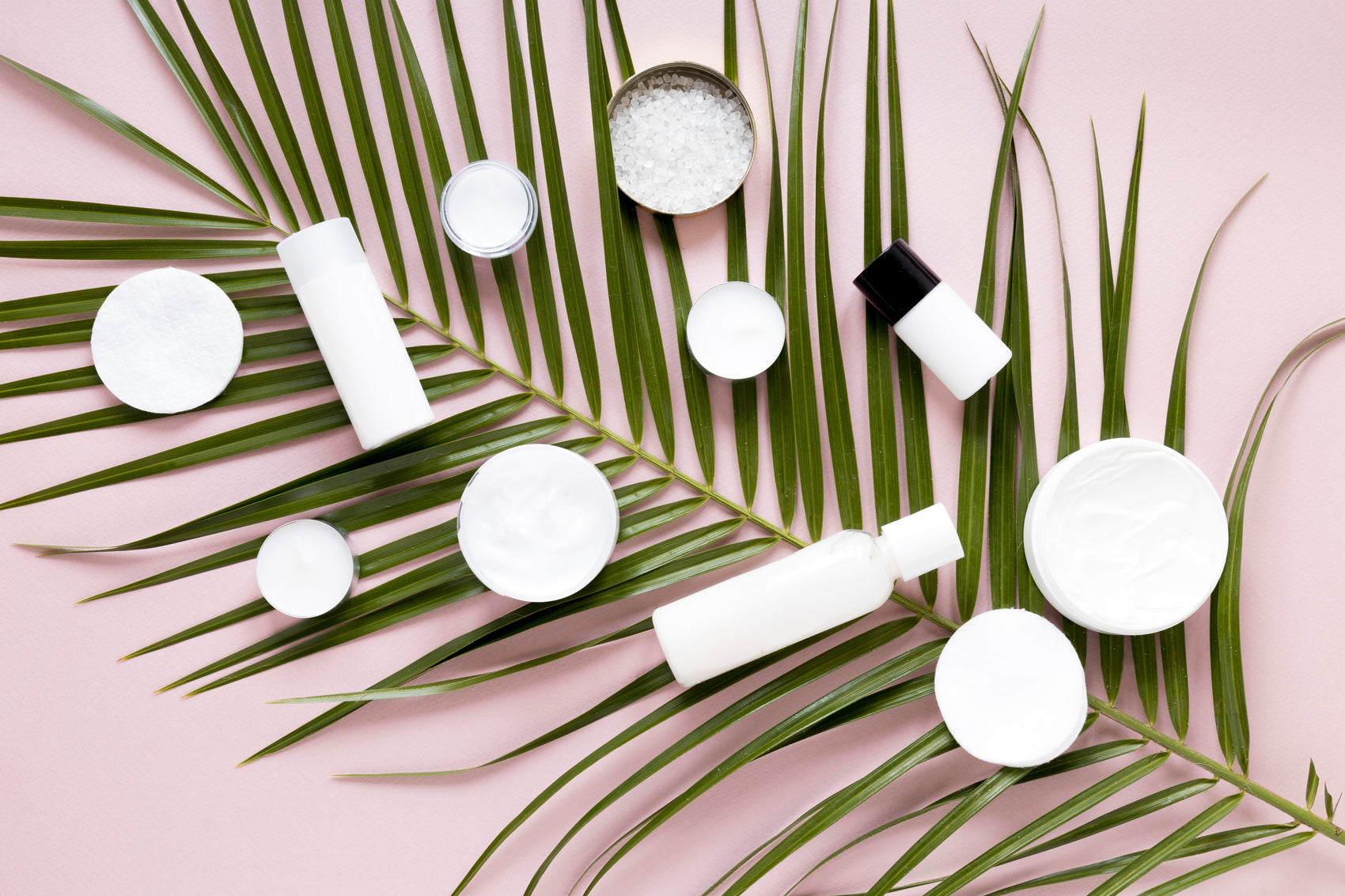Table of Contents
Introduction
Have you ever found yourself reaching for a soothing cup of chamomile tea after a long day, hoping to unwind? While this beloved herbal infusion is widely recognized for its calming properties, many may not realize that chamomile also offers remarkable benefits for the skin, particularly for conditions like rashes. In today’s world, where skin irritations can arise from various sources, understanding the natural remedies available to us is essential.
At Moon and Skin, we believe in the power of clean, thoughtful formulations and the importance of education in skincare. Chamomile, a time-honored herb, has been used for centuries to address various skin concerns, including inflammation, redness, and irritation. In this blog post, we'll explore the many benefits of chamomile tea for skin rashes, how to incorporate it into your skincare routine, and the science behind its soothing properties. Together, we'll empower your skincare journey through knowledge and natural solutions.
Thesis Statement
In this comprehensive exploration, we will cover chamomile tea's anti-inflammatory properties, its effectiveness in treating skin rashes, and how to use it safely and effectively as part of your skincare regimen. We will also highlight our products that complement the benefits of chamomile, ensuring you have a holistic approach to your skincare.
Understanding Chamomile and Its Properties
What is Chamomile?
Chamomile is a flowering plant belonging to the Asteraceae family, which includes daisies and sunflowers. The two most commonly used types of chamomile are German chamomile (Matricaria chamomilla) and Roman chamomile (Chamaemelum nobile). Both varieties have been celebrated for their medicinal properties for centuries and are particularly renowned for their calming effects and potential health benefits.
Key Bioactive Compounds
Chamomile contains several bioactive compounds that contribute to its therapeutic effects:
- Flavonoids: Particularly apigenin, which has antioxidant and anti-inflammatory properties.
- Terpenoids: Such as chamazulene, known for its ability to reduce inflammation and promote healing.
- Essential Oils: Contain compounds that can soothe irritated skin and improve overall skin health.
These compounds work synergistically to provide a calming effect on the skin, making chamomile an excellent choice for treating rashes and other skin irritations.
The Science Behind Chamomile's Efficacy
Chamomile's effectiveness for skin rashes is primarily due to its anti-inflammatory and antioxidant properties. Studies have shown that the flavonoids and essential oils found in chamomile can penetrate the skin and exert their effects at a cellular level. For instance, chamomile has been shown to inhibit the release of inflammatory markers, thereby reducing redness and swelling associated with skin rashes.
Additionally, chamomile's antimicrobial properties help prevent infections that may occur when the skin is compromised, providing a dual benefit of soothing irritation while protecting the skin barrier.
How Chamomile Tea Can Benefit Skin Rashes
1. Reducing Inflammation and Redness
One of the most significant benefits of chamomile tea is its ability to reduce inflammation. Whether the rash is due to allergies, eczema, or other irritants, chamomile can help calm the skin. The anti-inflammatory compounds in chamomile inhibit the action of inflammatory mediators, leading to a noticeable reduction in redness and swelling.
2. Soothing Irritated Skin
Chamomile tea can be used topically as a compress or wash to soothe irritated skin. The gentle, calming nature of chamomile makes it suitable for sensitive skin, helping to alleviate discomfort associated with rashes.
3. Hydrating and Nourishing the Skin
Chamomile tea is rich in antioxidants, which help protect the skin from free radical damage. When applied to the skin, the hydration provided by chamomile can help maintain the skin’s moisture barrier, preventing further irritation and promoting healing.
4. Healing Minor Wounds
Chamomile has been traditionally used to accelerate the healing of minor wounds and abrasions. Its antimicrobial properties help prevent infections, while its soothing effects promote faster recovery, making it an excellent choice for rashes that may be prone to secondary infections.
5. Minimizing the Signs of Aging
While this may not directly relate to rashes, it's worth noting that chamomile's antioxidant properties can also minimize the signs of aging, such as fine lines and wrinkles. By protecting the skin from oxidative stress, chamomile supports overall skin health.
How to Use Chamomile for Skin Rashes
Chamomile Tea Compress
One of the simplest ways to utilize chamomile for skin rashes is by making a chamomile tea compress. Here’s how:
- Brew Chamomile Tea: Steep a chamomile tea bag or dried chamomile flowers in boiling water for about 5-10 minutes. Allow it to cool.
- Soak a Clean Cloth: Dip a clean cloth into the tea and wring it out to remove excess liquid.
- Apply to Affected Area: Gently place the cloth on the rash for 10-15 minutes. This will help soothe inflammation and provide hydration.
Chamomile Infused Skincare Products
For those looking for convenience, incorporating chamomile-infused skincare products can be a great option. Our Hyaluronic Brightening Moisturizer is formulated with nourishing ingredients, including hyaluronic acid, to deeply hydrate the skin while harnessing the soothing properties of chamomile.
Chamomile Face Mask
Creating a chamomile face mask can further boost its benefits for irritated skin. Here’s a simple recipe:
-
Ingredients:
- 1 chamomile tea bag
- 1 tablespoon honey
- 1 tablespoon aloe vera gel
-
Instructions:
- Brew chamomile tea and let it cool.
- In a bowl, mix honey and aloe vera gel. Add a few spoons of cooled chamomile tea until you achieve a paste-like consistency.
- Apply the mask to the affected areas and leave it on for about 20 minutes.
- Rinse off with warm water.
Integrating Chamomile into Your Skincare Routine
Choose Products Wisely
When selecting skincare products, look for those that contain chamomile as an active ingredient. Our Best Sellers collection features products that are thoughtfully formulated to complement the soothing effects of chamomile, ensuring you can build a comprehensive skincare routine that addresses your specific needs.
Hydration is Key
In addition to using chamomile, it’s vital to keep your skin hydrated. Our Hyaluronic Brightening Moisturizer is an excellent choice for maintaining moisture levels while providing soothing benefits.
Regular Use
The key to seeing results with chamomile is consistency. Incorporating chamomile tea into your daily routine, either through consumption or topical application, can help maintain skin health and prevent future rashes.
Potential Side Effects of Chamomile
While chamomile is generally regarded as safe, some individuals may experience allergic reactions, especially those with allergies to plants in the Asteraceae family, such as ragweed, daisies, or marigolds. It’s essential to conduct a patch test before applying chamomile products to larger skin areas, particularly if you have sensitive skin.
Consult a Professional
If skin rashes persist or worsen, it’s crucial to consult a dermatologist. Chamomile should complement, not replace, professional medical advice and treatment.
Conclusion
Incorporating chamomile tea into your skincare routine can offer significant benefits, particularly for those struggling with skin rashes. Its anti-inflammatory, soothing, and hydrating properties make it a valuable addition to any skincare regimen. At Moon and Skin, we encourage you to explore the natural healing powers of chamomile alongside our thoughtfully formulated products.
Whether you choose to enjoy a warm cup of chamomile tea or apply it through soothing compresses or masks, the journey to healthier skin can begin with this gentle herb. Ready to transform your skincare routine? Explore our Bundle & Save collection today to discover how our clean formulations can support your skin through every phase of life.
FAQ
Q: Is chamomile tea safe for all skin types?
A: While chamomile is generally safe, those with allergies to related plants should perform a patch test before use.
Q: How often should I use chamomile for skin rashes?
A: You can use chamomile tea compresses daily or as needed to soothe rashes and inflammation.
Q: Can I drink chamomile tea if I have sensitive skin?
A: Yes, chamomile tea is known for its soothing effects and can be beneficial for anyone, including those with sensitive skin.
Q: What other benefits does chamomile have besides treating rashes?
A: Chamomile is known for its calming effects, can improve sleep quality, and has antioxidant properties that support overall skin health.
Q: How can I incorporate chamomile into my routine?
A: You can drink chamomile tea, use chamomile-infused skincare products, or create homemade masks and compresses for topical application.







